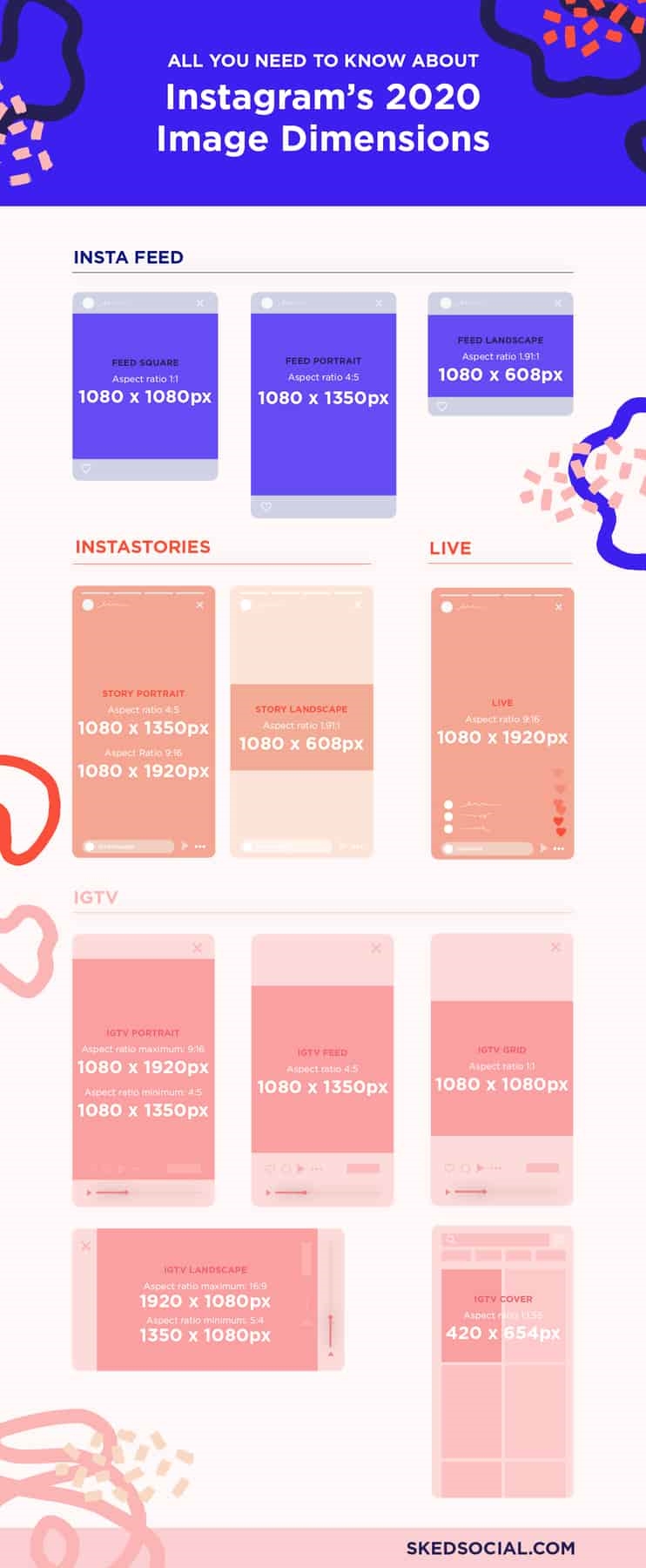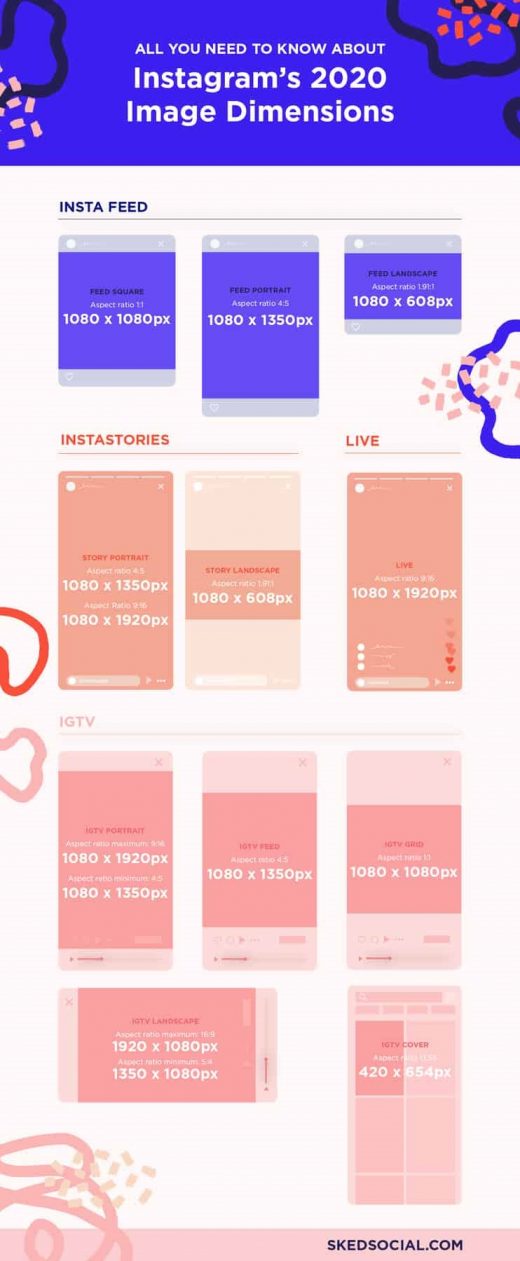All You Need To Know About Instagram’s Image Dimensions and Sizes in 2020
There have been a lot of changes since Instagram first graced our screens with its square, 1:1 image dimensions. Not only has it expanded its feed options from the traditional square to include landscape and portrait, but you also need to nail dimensions and sizes with stories, IGTV and live videos. Sounds exhausting, right?
Well, not really. It is so easy to get your Instagram dimensions and sizes right, and with this handy guide, there are no excuses.
While Instagram now accepts images a much wider range of image sizes, each type of post has optimised aspect ratios and pixels within that range. That’s a lot of numbers to remember – instead of memorising them all, optimise your aspect ratio and size by quickly referring to this guide whenever you’re in a bind.
Before we dive in, there are two key terms you need to be across: aspect ratio and size.
Aspect Ratio
The aspect ratio of an image simply refers to the relationship between the width of a picture in relation to its height.
It is communicated, as the name suggests, in a ratio, where the first number describes the width and the second the height.
According to Instagram, when you share a photo that has a width between 320px and 1080px, they will keep the resolution of your image intact, as long as the aspect ratio is between 1.91:1 and 4:5. If the aspect ratio of your photo isn’t supported, Instagram will crop it to fit within a supported ratio.
Size
The size of your image or video refers to the number of pixels that make up the width and height. Similarly to aspect ratio, the first number describes the width and the second the height.
As mentioned above, Instagram will support photos and videos with a width of between 320px and 1080px. If you share a photo at a lower resolution, Instagram will enlarge it to 320px in width. If you share a photo at higher resolution, the image will be sized down to a width of 1080px.
Quick stats

Now that we have those covered, let’s break the aspect ratios and sizes down even further.
Feed
When it comes to your feed, there are a lot of options for both static images and videos. The best thing about feed posts is that Instagram will automatically crop your existing image to make it fit within their requirements, no third party apps needed.
You can stick with the classic square image (1:1, 1080px x 1080px), which is now easier to capture when you can shoot in square on most smartphones, or opt for portrait (4:5, 1080px x 1350px) or landscape (1.91:1, 1080px x 608px).
If an aesthetically curated grid is a top priority, then you’ll need to keep in mind that all images and videos will display in square on the grid regardless of how they were posted.
Stories
Let’s be real, while Stories can be posted in both portrait and landscape, meaning anywhere from 1.91:1, 1080px x 608px, to 9:16, 1080px x 1920px, they are meant to be viewed in portrait form. For that reason we recommend sticking with either 4:5, 1080px x 1350px, or 9:16, 1080px x 1920px.
The Story technology is pretty versatile, meaning that you can resize your image within the story until you’re happy with the fit.
If you do choose to post in landscape, there are clever tricks you can use to up your design game. You can change the colour of the background to complement the image or video colours, and add Instagram stickers to fill the dead space.
IGTV
IGTV used to be strictly for vertical viewing, but the Instagram gods have recently opened this format up to landscape videos as well.
For portrait videos you’ll need a maximum aspect ratio of 9:16, 1080px x 1920px, and a minimum aspect ratio of 4:5, 1080px x 1350px.
For horizontal videos the maximum aspect ratio needs to be 16:9, 1920px x 1080px and a minimum of 5:4, 1350px x 1080px.
The biggest consideration will be choosing a cover photo, keeping in mind how it will be seen in the various Instagram pages.
You’ll need a cover photo of 1:1.55, 420px x 654px – this is how it will display on your channel page and in the IGTV category pages.
When your IGTV video appears in the feed it will be cropped to 4:5, 1080px x 1350px, and when seen as part of your grid it will be cropped to square (1:1, 1080px x 1080px).
If you’re adding any text overlays we would recommend popping them right in the centre, so that when viewed in the grid, you won’t have any awkward cut-offs.
Live
Live videos will be filmed through Instagram, so Instagram does all the hard work for you. But, just in case you were wondering, they will appear at 9:16, 1080px x 1920px.
That’s everything you need to know about Instagram image sizes and dimensions – for now, anyway. Now you just need to go forth and create your content!
Digital & Social Articles on Business 2 Community
(68)


